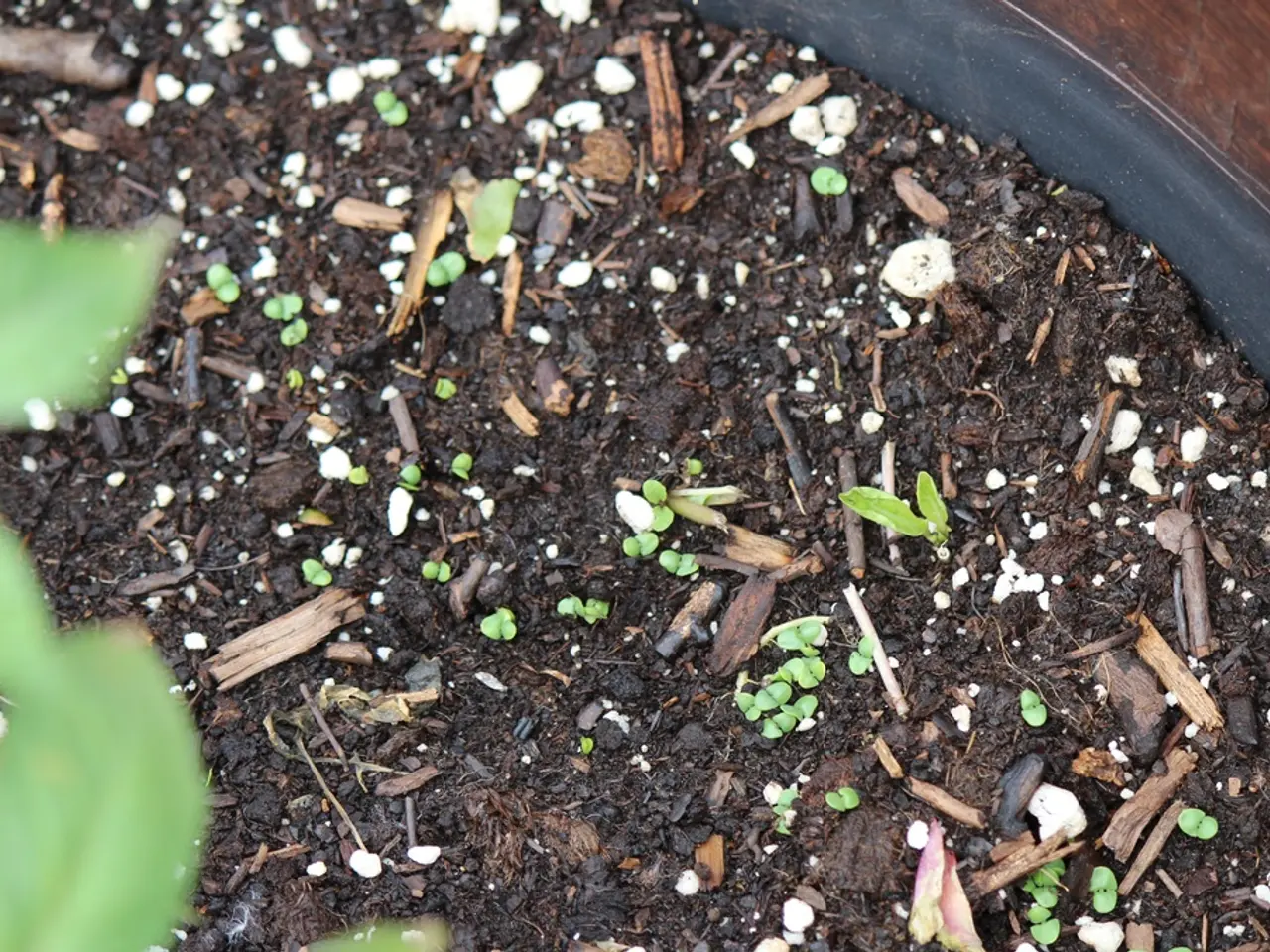Tips for Easier Soil Cultivation: A Guide to Effective Planting in Clay Soil
For gardeners dealing with clay soil, the struggle is real. But fear not! With a few simple steps, you can turn dense, poorly drained clay into fertile, well-structured soil supportive of healthy plant growth.
Add Organic Matter
The key to improving clay soil lies in the addition of organic matter. Annually apply 2-4 inches of organic matter such as compost, well-aged manure, shredded leaves, or leaf mold. Compost is particularly effective because it helps separate the fine clay particles, improving oxygen flow and water drainage while enhancing nutrient supply and supporting beneficial soil microorganisms [1][2][4]. Integrate the compost into the top 6-8 inches of soil, preferably when the soil is moist but not wet, to avoid compaction [3][4].
Amendments
While gypsum can help improve clay soil structure by promoting the aggregation of clay particles, enhancing porosity and drainage, it is not effective on layered soil. Avoid adding sand alone as it can worsen the soil by creating a concrete-like texture without sufficient organic matter [3]. Raised beds and strategic drainage systems (like French drains) can help manage water flow and prevent waterlogging in clay soils [1][3].
Aeration
Aerating the soil is crucial for increasing pore space, allowing better air and water movement. Aerate the soil using manual tools or commercial core aerators. Timing is critical: work clay soil when it crumbles easily but is not sticky or powdery—typically late spring or early fall depending on your climate—to prevent permanent compaction [3][5]. Avoid working clay soil when too wet (sticky) or too dry (dusty), which damages soil structure [5].
Cover Crops
Grow cover crops like clover, winter rye, or buckwheat in off-seasons. These plants develop deep roots that break up dense clay, create natural drainage channels, and add organic matter when tilled back into the soil [2][5].
By combining these steps—adding organic matter regularly, carefully amending soil chemistry, aerating at proper moisture levels, and using cover crops—you can transform dense, poorly drained clay into fertile, well-structured soil supportive of healthy plant growth [1][2][3][4][5].
In subsequent years, 1 to 3 inches of organic mulch should be added as a top dressing each year. Testing the soil before making any amendments is recommended to determine its makeup, organic matter content, pH, and nutrient levels. Organic matter attracts microorganisms that speed up soil improvement.
Happy gardening!
[1] Soil Life [2] Garden Myths [3] The Spruce [4] Gardening Know How [5] Mother Earth News
- To further improve your home-and-garden’s lifestyle, consider incorporating organic matter such as compost, well-aged manure, shredded leaves, or leaf mold into your clay soil annually.
- Ensure a thriving home-and-garden by cultivating cover crops in off-seasons, like clover, winter rye, or buckwheat, to break up dense clay, promote drainage, and add organic matter when tilled back into the soil.





